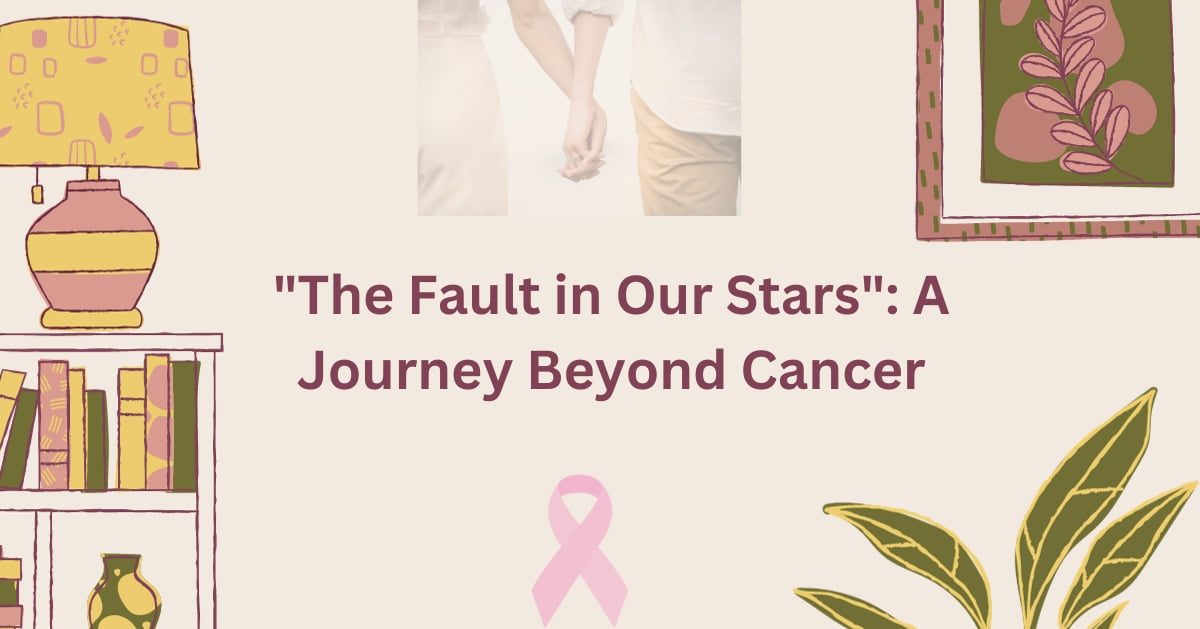“The Fault in Our Stars”: A Journey Beyond Cancer

“The Fault in Our Stars,” penned by John Green and published in 2012, is a poignant narrative that navigates the lives of two teenagers grappling with the complexities of love and life while contending with cancer. Falling within the young adult genre, the novel diverges from conventional narratives by spotlighting protagonists facing realistic and contemporary challenges. The central characters, Hazel Grace Lancaster and Augustus Waters, are intricately woven into a storyline that transcends the boundaries of conventional young adult fiction, exploring themes such as love, death, fate, identity, and literature. In this exploration, the novel challenges stereotypes embedded in the traditional cancer narrative, promising a unique journey into the hearts of its characters. This article will analyse how “The Fault in Our Stars” presents the diverse and intricate experiences of young individuals dealing with cancer while subverting established notions of heroism, tragedy, and romance.
Plot Summary
The story commences with Hazel Grace, a sixteen-year-old grappling with thyroid cancer that has metastasized to her lungs. Attending a support group for cancer patients, she meets Augustus Waters, a charismatic seventeen-year-old in remission from osteosarcoma. Their initial connection is forged through witty banter and a shared understanding of the challenges they face. What unfolds is a profound and transformative journey that transcends the boundaries of illness.
A significant aspect of the plot revolves around literature, particularly Hazel’s obsession with a novel titled “An Imperial Affliction” by the reclusive author Peter Van Houten. Augustus introduces Hazel to his favourite book, “The Price of Dawn,” and their shared love for literature becomes a powerful bond that shapes their relationship.
The narrative takes an unexpected turn as Augustus, using a cancer-related wish, takes Hazel on a journey to Amsterdam to meet Van Houten, hoping for answers about the unfinished story in “An Imperial Affliction.” However, the meeting with the author proves disappointing, revealing him to be a bitter and unhelpful figure. Despite this setback, Hazel and Augustus find solace in their shared experiences and the beauty of the city, ultimately confessing their love for each other against the backdrop of the Anne Frank House.
The plot intensifies as Hazel’s health takes a downturn and Augustus discloses that his cancer has returned and spread. The novel navigates the complexities of their relationship as they grapple with their mortality. Augustus’s eventual death leaves Hazel shattered, and the narrative delves into themes of grief, acceptance, and the impact of loss on those left behind.
The novel concludes with Hazel meeting Van Houten again, gaining insights into the author’s motivations, and receiving a letter from Augustus written before his death. This letter expresses Augustus’s enduring love and gratitude, underscoring the novel’s exploration of the enduring impact of relationships beyond physical existence.
[You can Also Read: The Glass Castle: A Detailed Summary of the Story]
Themes and Messages
“The Fault in Our Stars” defies the clichés and stereotypes embedded in the cancer narrative, challenging preconceived notions about the experiences of cancer patients. It rejects the notion that individuals with cancer are defined solely by their illness, showcasing their diverse personalities, choices, and relationships. The novel dismantles the romanticized image of heroic martyrs or tragic victims, portraying cancer patients as individuals with a range of emotions, including anger, fear, and cynicism. It emphasizes the unpredictability of outcomes and challenges the expectation of guaranteed happy endings, underscoring the uncertainty, pain, and loss that often accompany illness. The narrative dismantles the notion of cancer patients as passive or dependent, highlighting their capacity for activity, creativity, and independence. Above all, the novel emphasizes the importance of connection, memory, and meaningful interactions over conventional ideas of making a difference or leaving a legacy.
Key Characters:
Hazel Grace Lancaster: The protagonist and narrator, Hazel is a thoughtful and introspective teenager living with cancer. Her favourite book, “An Imperial Affliction,” plays a significant role in the narrative.
Augustus Waters: Augustus, often referred to as Gus, is a charismatic and philosophical young man in remission from osteosarcoma. His charm and unique outlook on life have a profound impact on Hazel.
Support Group: Hazel and Augustus initially meet at a cancer support group where they bond over their shared experiences and a unique sense of humour.
Literary Connection: Augustus introduces Hazel to his favourite book, “The Price of Dawn,” and they share their respective favourite novels. Hazel becomes particularly obsessed with “An Imperial Affliction” and its mysterious ending.
Amsterdam Trip: Augustus, using a cancer-related wish, takes Hazel to Amsterdam to meet the reclusive author of “An Imperial Affliction,” Peter Van Houten. The trip is a mix of disappointments and revelations, but it deepens their connection.
Health Struggles: Hazel’s health takes a downturn, and Augustus reveals that his cancer has returned and spread. Despite their challenges, their love for each other deepens.
Loss and Grief: Augustus’s health deteriorates rapidly, leading to his eventual death. The novel explores the impact of this loss on Hazel and their shared circle of friends.
Meeting the Author: After Augustus’s death, Hazel confronts the author Peter Van Houten, discovering the heartbreaking inspiration behind “An Imperial Affliction.”
[You can Also Read: Sense and Sensibility Overview, Characters, and Key Facts]
Conclusion
“The Fault in Our Stars” surpasses typical young adult fiction, delving into a moving exploration of love and mortality. John Green challenges cancer stereotypes, crafting a narrative that embraces life’s unpredictability. As Hazel and Augustus navigate illness, literature, and loss, the novel stands as a testament to enduring genuine connections, redefining heroism and romance. In moments of grief and acceptance, characters offer profound reflections on the essence of being alive, making Green’s masterpiece a timeless reminder that love and meaningful connections illuminate the path through life’s complexities.
